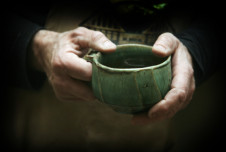One of the schools where I taught had a gift-giving tradition that will probably sound familiar to many of you: The teachers came up with the idea for the gift, bought the supplies, and had every child make the same exact present for their parents. Our goal was often convenience and ease rather than thoughtfulness.
 Only_Creatives
Only_Creatives
Parents were usually very gracious and appreciative when they got their gift. But I have to hand it to one dad who gave the most honest response I ever heard (out of earshot of his child, of course): “Great. More junk.”
Of course, it’s not the actual gift but the thought that counts, right? Yes, to a certain extent. However, research confirms what most of us already know: that the best gifts are meaningful gifts.
So, how can teachers help students give meaningful gifts in this season of giving—and at other times of the year—that will also help them develop their empathic skills rather than their assembly-line abilities?
To begin with, it’s important to understand what makes a gift meaningful. Years of research have brought scientists to conclude that a present is meaningful when it is obvious to the recipient that the gift-giver made a real effort in choosing or making the gift and sacrificed time to do so.
Even if teachers don’t have any time to spare for gift-making in their classrooms, here are some simple principles that they can impart to their students for giving meaningful gifts:
1) Consider the person receiving the gift. A meaningful gift says that you care about that person. According to Nel Noddings, an authority on care, true caring acts require us to really know the recipient and therefore to understand the kind of care they actually need rather than what we think that person needs.
Students might start by reflecting on the following questions about the gift receiver:
a) What are the person’s interests?
b) What kinds of things does this person like to do?
c) What makes the person smile and laugh?
d) Has this person been through a difficult time or accomplished something recently?
Answers to these questions will help guide students in choosing or making a gift that aligns with the person’s interests or needs, making it more meaningful.
2) Give it your all. Explain to students that meaningful gifts require the sacrifice of time and effort on the part of the gift-giver—a worthwhile lesson that will serve students for the rest of their lives.
To help this lesson sink in, ask students to compare how it felt to receive a gift that embodied a lot of thought and effort vs. one that didn’t. Most likely they’ll recall a significant difference in how much the gifts meant to them. Indeed, research suggests that when kids become aware of the costs or sacrifices someone incurred to give them a gift, those kids develop stronger feelings of gratitude—which, in turn, has been linked to a desire to “pay it forward” and give to others.
3) Give an experience, not a thing. Research on happiness by Sonja Lyubomirsky and others has pointed to a somewhat surprising conclusion: The things that truly make us happy in life aren’t necessarily things at all; they’re experiences, moments spent with friends or family or performing an activity we enjoy deeply. This seems especially true when it comes to gifts, for a few research-based reasons.
First, giving someone an experience, such as a hike to a favorite place or a dinner complete with a printed menu, demonstrates sensitive knowledge of the gift-receiver—as long as the gift-giver chooses something that the receiver would like to do, not what the giver wants to do (an important point to emphasize with students).
Second, experiences usually create shared time between the giver and the receiver—a wonderful way to nurture positive relationships, a key to happiness.
Finally, experiences give happy memories that can be savored long after the experience has ended. Researchers have found that recalling happy experiences—or savoring—by talking about them with others or purposefully trying to remember the positive event can increase our happiness.
In the end, students who learn to give gifts that require time and effort might also receive a surprise gift in return: an increase in their own happiness! Research shows that children are happier when they share their own resources with someone than when they give away something that wasn’t really theirs.
My favorite example, familiar to all English teachers, is in O. Henry’s The Gift of the Magi, in which a poverty-stricken husband and wife sacrifice their most precious possessions to buy deeply meaningful gifts for one another. The story is fictional, but science has proven its message to be true: If they had been real, I’d bet Jim and Della would have made each other deeply happy people.






Comments